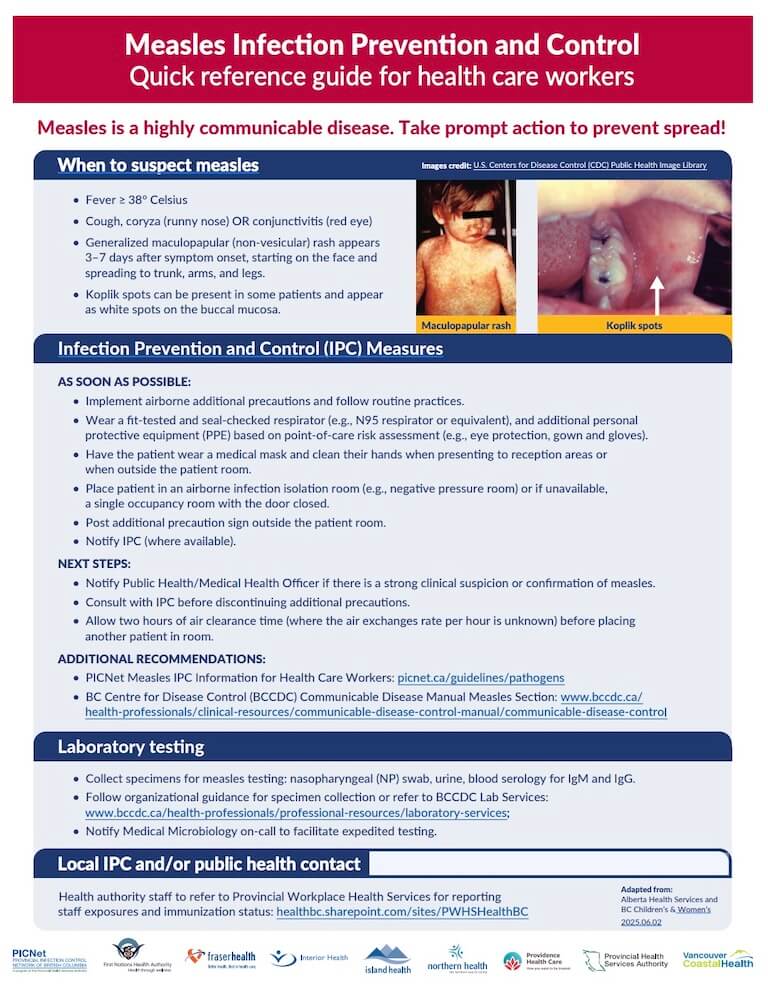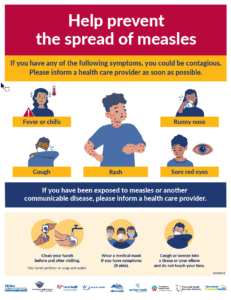PICNet Resources for Measles
Measles is a highly contagious viral disease that can lead to serious health complications, particularly among young children, unvaccinated individuals, and those with weakened immune systems. Despite being vaccine-preventable, measles continues to pose a public health risk, especially in the context of declining immunization rates and increased global travel. In British Columbia, periodic cases and outbreaks serve as a reminder of the importance of vigilance in disease surveillance, rapid response, and immunization efforts.
This page provides a collection of PICNet resources to support health care workers and infection control teams in identifying, managing, and preventing measles cases.
Guidelines
- UPDATED: Measles: Infection Prevention and Control Information for Health Care Workers (January 2025)


